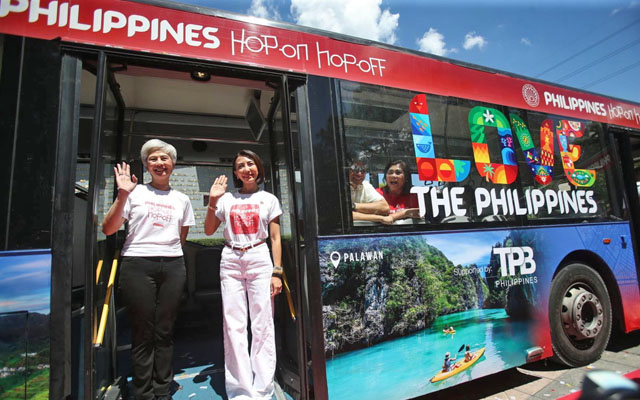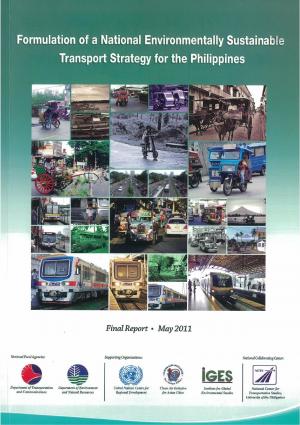Leading Benefits of Transit Advertising Philippines for Businesses
Leading Benefits of Transit Advertising Philippines for Businesses
Blog Article
How Transit Advertising Can Change Public Transport Spaces Into Dynamic Advertising And Marketing Platforms
Transit advertising and marketing holds significant possibility to redefine public transport rooms into vibrant marketing systems that inform and involve. By utilizing cutting-edge styles such as interactive stands and digital displays, brands can not only get to a diverse audience however also improve the overall traveler experience. This technique develops a distinct chance for brands to get in touch with customers in a setting that is often forgotten. As we check out the complex benefits and evolving strategies of transportation advertising and marketing, it increases the inquiry of just how this makeover could redefine our interactions with both brand names and the urban setting.
Benefits of Transit Advertising And Marketing

In addition, transportation advertising and marketing is extremely affordable compared to standard media. It allows marketers to accomplish high impressions at lower costs, maximizing roi. The captive target market of commuters supplies an opportunity for brands to share their messages to people that are frequently responsive during their traveling times.
Furthermore, the vibrant nature of transportation advertising allows projects to be upgraded frequently, guaranteeing that messaging stays timely and appropriate. This flexibility can be vital in reacting to market fads or promotional events, keeping the brand name top-of-mind for consumers. Finally, the prevalent existence of transportation marketing contributes to brand name recall; repeated direct exposure within familiar travel contexts strengthens brand understanding and promotes customer loyalty, ultimately enhancing and driving sales brand name online reputation.
Kinds Of Transit Advertising And Marketing
Public transport systems give numerous formats for advertising and marketing, each satisfying various advertising approaches and audience engagement methods. One noticeable kind is outside bus and train covers, which cover the entire vehicle and produce a mobile billboard effect, permitting high visibility in metropolitan environments. These wraps can record interest as they traverse hectic roads, reaching a diverse target market.
An additional preferred style is indoor marketing, that includes posters, electronic displays, and ads on transportation seats. These placements involve passengers during their journey, enhancing brand name messaging in a restricted room. Digital displays, particularly, supply the advantage of dynamic material, allowing marketers to update messages in real-time.
Terminal advertising is also substantial, featuring posters, banners, and interactive kiosks within transportation terminals. These ads take advantage of foot traffic and can target specific demographics based upon location.
Finally, marketing partnerships with transportation authorities can cause special projects, such as themed transportation experiences or events, enhancing the overall interaction with travelers. Each kind of transit advertising and marketing provides unique advantages, permitting brand names to customize their method to properly reach their target market within the public transportation environment.
Engaging Travelers Successfully
Commuters are progressively swamped with advertising and marketing messages during their everyday trips, making it essential for brands to involve them in innovative means. To catch attention in this crowded space, marketers need to prioritize creative thinking and significance. Using attractive visuals and succinct messaging can considerably improve the possibility of involvement.
Interactive components, such as QR codes or augmented fact functions, can also transform static ads into immersive experiences, fostering a much deeper connection with the audience. Brands need to focus on attending to commuters' rate of interests and demands, tailoring messages to resonate with their lifestyle, whether via promotions for neighborhood companies or solutions created to improve their commuting experience.
Moreover, timing plays an important duty; purposefully positioning advertisements during height commuting hours can make the most of exposure and effect. Engaging travelers successfully likewise includes leveraging social networks combination, allowing travelers to share their experiences or promos directly from transit systems, consequently enhancing brand reach.
Fundamentally, reliable involvement rests on comprehending the commuter journey and producing compelling, interactive, and relevant advertising experiences that not only catch interest but also drive activity and loyalty. By doing so, brands can transform mass transit right into a dynamic marketing system that resonates with its target market.

Measuring Advertising Impact
Just how can brands accurately evaluate go to these guys the performance of their marketing campaigns en route settings? Gauging the effect of transportation advertising calls for a diverse approach hop over to these guys that combines qualitative and measurable metrics. One prevalent approach is tracking engagement via mobile analytics, where brands can examine foot web traffic patterns and application communications before, during, and after projects.
Studies can give important understandings into brand name recall and customer belief, enabling brand names to gauge exactly how well their messages reverberate with commuters. In addition, keeping an eye on social media involvement pertaining to certain campaigns can disclose shifts in public understanding and brand conversation.

In addition, collaborating with transportation agencies can boost measurement precision, as they often possess thorough market information on ridership trends. By integrating these approaches, brand names can create a comprehensive understanding of their marketing efficiency, ensuring that their projects not just get to however likewise impact their website their target audiences properly.
Future Trends en route Advertising
A considerable change is expected in transit advertising and marketing as technical innovations and altering consumer behaviors reshape the landscape. Transit Advertising Philippines. The integration of interactive media and electronic display screens is anticipated to enhance engagement, enabling brand names to deliver vibrant content that reverberates with varied target markets. As mass transit systems embrace wise modern technology, advertisers will certainly take advantage of real-time information analytics to customize messages based upon traveler demographics and behaviors
Additionally, increased truth (AR) is positioned to transform the means commuters interact with ads. By offering immersive experiences, AR can change a mundane journey right into an interesting story that captures focus and fosters brand commitment. This development will likely encourage advertisers to develop even more experiential projects that drive customer communication.
Sustainability is another essential pattern affecting transportation marketing. As ecological consciousness expands, brand names will progressively seek to straighten with environmentally friendly techniques, utilizing lasting products and advertising eco-friendly initiatives within their campaigns.
Final Thought
In conclusion, transportation advertising and marketing uses substantial advantages by enhancing brand visibility and involving a captive audience. As trends evolve, the potential for cutting-edge interactions in between brand names and commuters is poised to grow, making certain that transit advertising continues to be a vital part of modern advertising and marketing strategies.
Transportation marketing holds considerable capacity to redefine public transport rooms right into dynamic marketing systems that engage and inform. The prevalent visibility of transit advertising adds to brand recall; repeated exposure within familiar travel contexts reinforces brand recognition and promotes customer commitment, eventually driving sales and improving brand name credibility.
Exactly how can brands properly analyze the performance of their marketing projects in transit settings?In conclusion, transit advertising provides significant advantages by enhancing brand name presence and engaging a restricted audience. Transit Advertising Philippines. As fads advance, the capacity for ingenious interactions between brands and commuters is poised to grow, making sure that transit advertising and marketing continues to be an essential part of modern-day advertising and marketing techniques
Report this page